- Home
- Alfred Bester
Redemolished
Redemolished Read online
ALFRED BESTER
REDEMOLISHED
Alfred Bester was born in New York City in 1913. After attending the University of Pennsylvania, he sold several stories to Thrilling Wonder Stories in the early 1940s. He then embarked on a career as a scripter for comics, radio, and television, where he worked on such classic characters as Superman, Batman, Nick Carter, Charlie Chan, Tom Corbett, and the Shadow. In the 1950s, he returned to prose, publishing several short stories and two brilliant, seminal works, The Demolished Man (which was the first winner of the Hugo Award for Best Novel) and The Stars My Destination. In the late 1950s, he wrote travel articles for Holiday magazine, and eventually became their Senior Literary Editor, keeping the position until the magazine folded in the 1970s. In 1974, he once again came back to writing science fiction with the novels The Computer Connection, Golem100, The Deceivers, and numerous short stories. A collection of his short stories, Virtual Unrealities, was published in 1997, and his final novel, Psychoshop—completed after his death by celebrated author Roger Zelazny—was published in 1998. After being a New Yorker all his life, he died in Pennsylvania in 1987, but not before he was honored by the Science Fiction & Fantasy Writers of America with a Grandmaster Award.
BOOKS BY ALFRED BESTER
The Demolished Man
The Stars My Destination
Virtual Unrealities: The Short Fiction of Alfred Bester
Psychoshop (with Roger Zelazny)
iBooks science fiction
AVAILABLE NOW
The Deceivers
The Computer Connection
by Alfred Bester
Asimov's Mirage
by Mark W. Tiedemann
Byron Priess's Robot City: Volume 1
Byron Preiss's Robot City: Volume 2
Byron Preiss's Robot City: Volume 3
Arthur C. Clarke's Venus Prime: Volume 1
Arthur C. Clarke's Venus Prime: Volume 2
Arthur C. Clarke's Venus Prime Volume 3
by Paul Preuss
REDEMOLISHED
ALFRED BESTER
iBooks
new york
www.ibooksinc.com
An Original Publication of iBooks
Copyright © 2000 by the Estate of Alfred Bester
An iBooks Book
All rights reserved, including the right to reproduce this
book or portions thereof in any form whatsoever.
Distributed by iBooks
1230 Park Avenue, New York, NY 10128
[email protected]
http://www.ibooksinc.com
Print ISBN 0-7434-0725-3
First iBooks printing December 2000
Cover design by J. Colby
Cover art by Howard Chaykin
CONTENTS
Introduction
7
The Probable Man
13
Hell is Forever
64
The Push of a Finger
165
The Roller Coaster
217
The Lost Child
227
I'll Never Celebrate New Year's Again
231
Out of This World
237
The Animal Fair
250
Something Up There Likes Me
298
The Four-Hour Fugue
327
Introduction to the Articles
350
Gourmet Dining in Outer Space
351
Place of the Month: The Moon
362
The Sun
366
Introduction to the Essays
377
Science Fiction and the Renaissance Man
379
A Diatribe Against Science Fiction
400
The Perfect Composite Science Fiction Author
405
My Affair with Science Fiction
412
Introduction to the Interviews
443
John Huston's Unsentimental Journey
446
Rex Stout
458
Conversation with Woody Allen
471
Isaac Asimov
481
Robert Heinlein
485
Introduction to The Demolished Man: The Deleted Prologue
490
The Demolished Man: The Deleted Prologue
492
Writing and The Demolished Man
505
In Memoriam: Alfred Bester 1913-1987 by Gregory Benford
514
Introduction
Alfred Bester (1913-1987) was a legendary author. Most notable for two major science fiction novels written in the 1950s, The Demolished Man and The Stars My Destination, Bester also wrote several great short stories, interesting later novels, and many fascinating articles and essays during his long career. Bester contributed to science fiction an intelligent cinematic style it was lacking, and applied his healthy curiosity about the sciences and human interactions to create truly unique works.
Born and raised in New York, he was educated at the University of Pennsylvania (where he majored in several subjects, joined the Philomathean Society, and tried his best to be a "Renaissance Man") and Columbia (where he studied law briefly).
After college, Bester drifted into SF and comics at the same time in the 1940s (see the essays "Science Fiction and the Renaissance Man" and "My Affair with Science Fiction"), working on SF stories like "The Probable Man," "The Push Of A Finger" and "Hell Is Forever."
In the comics field, Bester wrote for Superman and the original Golden Age Green Lantern (and not only came up with the Green Lantern oath that still survives to this day, but also developed notable villains like Vandal Savage and Solomon Grundy) for National Comics (now DC).
Note how Bester learned quickly; the nominal "Probable Man" story is nearly raw pulp, with only a few of Bester's brilliancies showing through under a welter of cliches; only a year later he was able to write the mature "Push of a Finger," where the breezy style and cinematic virtuosity pushes the pulp elements nearly aside.
Bester segued into radio/TV in the early 1950s, working on detective/mystery programs and variety/quiz shows, while continuing to write great experimental SF, novels like The Demolished Man (see the restored 1952 prologue in this volume), and stories such as "The Roller Coaster."
He also attempted to break out of SF with a mainstream psychological thriller about the TV world, Who He? (a.k.a. The Rat Race), 1953. This novel met with limited success, but was one of only two Bester books to be reviewed by The New York Times, and the movie option sale gave Bester the funds to go to Europe for a time to write The Stars My Destination.
By the late fifties, after producing The Stars My Destination and a wide range of dazzling short stories, Bester felt he had had it with SF (summing his feelings up in the essay "Science Fiction and the Renaissance Man," 1957), and took steps to divorce himself from the field, but hard.
In a revealing series of columns in The Magazine of Fantasy & Science Fiction in the early 1960s, Bester waded in and punched SF in the nose, in the guise of F&SF's book reviewer. During his 18-month tenure he would twit and censure the authors of the books he was reviewing; even going so far as to drop the books from one column as being entirely too bad to review, and replacing the reviews with "A Diatribe Against Science Fiction" (February 1961) that went right for the throat.
He back-pedaled swiftly the next month with his review of the great SF authors of the current time, ("The Perfect Composite Science Fiction Author," 1961), showing that not all SF sucked.
At the same time as his SF-writing meltdown (starting circa 1959 and continuing throughout the 1960s
), Bester was struggling with the demands of a heavy writing load. This period included TV scriptwriting, a column for Rogue magazine, plus the start of a long stint as an interviewer (and later Senior Editor) for Holiday. Bester was convinced that his talents lay in the mainstream writing field, though he would not make much headway beyond a series of remarkable interviews for Holiday (several, written between 1957-1969, are included in this collection). A psychological thriller apparently written in this period, Tender Loving Rage, went unpublished in Bester's lifetime, and was finally released in a hardback edition in 1991 by Tafford Press.
The stories from this time include trenchant pieces he managed to produce for his Rogue column ("Bester's World," generally a mix of celebrity gossip, commentary about the entertainment field, and nonfiction articles about life in New York), such as "I Will Never Celebrate New Year's Again" (1963) and "The Lost Child" (1964).
Even in his SF exile, Bester kept ties with the field. His collection The Dark Side of the Earth appeared in 1964. It was a collection of 1950s stories from F&SF that have been collected elsewhere (Virtual Unrealities), except for "Out Of This World" (1964), a short alternate-universe piece that reads like a reworked Twilight Zone episode.
Out of SF, Bester's restless nature led to a series of remarkable interviews and articles for Holiday magazine. As early as 1960 he was trying to dovetail his SF knowledge into entertaining articles for the Holiday crowd (see "Gourmet Cooking in Outer Space," which reads like a chapter of Bester's "missing" 1960 SF novel), and throughout his tenure at that magazine he was able to put his scientific knowledge and restless curiousity to work in articles like "The Sun" (1969) and "The Moon" (1969).
But the interviews are the real prizes from this time period. Bester was working for a major publication, and could go anywhere and interview almost anybody. The support was fantastic (as Bester himself tells it in the introduction to the Interviews section), and he took full advantage. The interviews were well-produced in Holiday's very handsome large format, with photographs by some of the best in the business (Diane Arbus, Phillipe Halsman, Bruce Davidson, Hans Namuth, Arnold Newman, and others).
The bottom fell out of Holiday in 1970 (the magazine was sold, reverted to a standard format, and moved its editorial offices to Kansas City), and Bester was left high and dry. He was still in communication with F&SF, and queried them about a long fantasy story he'd written, "The Animal Fair" (1972). They were receptive, printing the story (and giving Bester a special cover line), and welcomed him back to the field. Bester was back in gear by the early 1970s.
Bester concentrated exclusively on SF from this point on, even as his health began to fail. This material included a pair of SF-related interviews for Publishers Weekly ("Isaac Asimov" and "Robert Heinlein," both 1973). In this time he also produced essays and satires on the SF field ("Writing and The Demolished Man," 1972; "My Affair with SF," 1973), and saw his earlier stories collected in the omnibus collection Starlight (1976).
During the 1970s and into the 1980s Bester still had a lot of writing potential, and produced a series of remarkable stories (like "Something Up There Likes Me," 1973 and "The Four Hour Fugue," 1974, included in this collection) and novels, including The Computer Connection (1973), Golem100 (1980), and The Deceivers (1981).
Even though his novels of the '70s and '80s were well received (for the most part), and his earlier novels The Demolished Man and The Stars My Destination were almost never out of print (indeed, The Demolished Man appeared in a deluxe Easton Press edition in 1986, with an introduction by Kurt Vonnegut Jr.), by 1987 Bester's reputation (and net worth) was at a low ebb. The later novels were out of print, and his last story collection had appeared in 1976. Though he was recognized as a Grand Master by the SFWA in 1987 (and knew about the award), he still wound up dying unnoticed in a critical care facility at the age of seventy-three (although as Julie Schwartz tells it, Harlan Ellison tried to ease Bester's transit by calling the hospital, pretending to be a reporter from USA Today, and haranguing them into giving Bester the best care).
After his death, Bester's reputation rose, as is the unfortunate way. To quote Herman Melville, no stranger to this process:
"All ambitious authors should have ghosts capable of revisiting the world, to snuff up the steam of adulation, which begins to rise straightway as the Sexton throws his last shovelful on him. Down goes his body & up flies his name." (1849)
In 1979, Byron Preiss and Howard Chaykin, working with Bester, produced the first part of a striking graphical version of The Stars My Destinantion. It was one of the first full-scale graphic novel attempts, and, unfortunately, events occurred that left the second part out of print until 1992, when a complete edition was published by Epic Comics, as produced by Byron Preiss Visual Publications.
Preiss's interest in Bester's work led directly to its early 1990s renaissance, as new editions of The Demolished Man (introduced by Harry Harrison) and The Stars My Destination (complied and edited by Alex and Phyllis Eisenstein, and introduced by Neil Gaiman) appeared, as well as a new short fiction collection, Virtual Unrealities (edited by Robert Silverberg, Byron Preiss and Keith R. A. Candido), and a new novel, Psychoshop (a posthumous collaboration with Roger Zelazny).
Continuing through 2000, other reissues include The Deceivers (with an afterword by Julius Schwartz), and The Computer Connection (introduced by Harlan Ellison), and this new collection, Redemolished.
Redemolished makes up the best source for Bester's uncollected short fiction, essays, articles, and miscellaneous writings, including the deleted prologue to The Demolished Man. It gives you full access to the range of Bester's extraordinary five decades as a writer, and lets Bester speak for himself as you follow his restless mind across any subject he could ferret out with his amazing curiosity, drive, and exemplary writing talent.
Richard Raucci
San Francisco, 2000
The Probable Man
I
The black car drew alongside, then swerved in front of their roadster. Brakes squealed. David Conn kicked the door open, shouldered the heavy rucksack and grabbed Hilda's wrist.
"Come on!" he said.
The gloom of late afternoon lowered as they ran panting across the fields. Conn saw the grass alongside whip, and a fraction of a second later heard the crack of a gun sounding from behind. Hilda gasped.
"They mean business," Conn said.
He twisted his head as they ran. Shapes followed them through the dusk. Five-six-seven. If only he could find cover. But they were running across a broad open lawn that looked like a fairway. Two hundred yards to the left he saw the jet outline of bunkers; a green topped by a fluttering flag.
"This way!" Conn grunted.
Shots sounded again, sharp and clear in the April evening as they tumbled over the edge of the bunker down into a soft sandpit. Conn got the rucksack off his shoulder, turned and squirmed up the side of the pit, facing their pursuers. He slid his gun out and fired at a dim shape. Hilda came up alongside to watch.
"Get down," said Conn. "They want you."
"Alive," said Hilda, "not dead. I won't be any good to them dead."
"I will," said Conn.
He tried to catch his breath. Beyond pistol range the seven black figures closed to a tight group and consulted. Conn counted cartridges. Two clips. Twelve. It wouldn't be enough. They would wait until it grew a little darker and then rush. He couldn't afford to lose time. He had to get to the machine by eight—and that gave him less than an hour to fight and win an impossible battle.
"Save a bullet for me," said Hilda.
Conn looked at her quickly. The soft blond hair and blue eyes. This, he thought, is downright weird. I fall in love with a girl who died a thousand years before I was born. I look at her full lovely mouth and I want to kiss it, and all the time I know her mouth has been dust and ashes for a thousand years.
"That's stupid talk," Conn said. "You don't know what I can do."
"Maybe you don't know what Nazis can d
o," Hilda answered. "They'll take me back to Holland. They'll use me for political blackmail. They'll keep me locked up—like Leopold of Belgium. Save a bullet."
The seven forms were still consulting. Conn knew what their big problem was. They were wondering how to avoid killing Hilda in the attack. It was getting black rapidly. Conn sent two slugs their way just to let them know. Then he stole another glance at Hilda. She smiled tremulously.
"I'm thinking that you're beautiful," Conn said.
"You're thinking how sorry you are you ever got mixed up with a refugee," Hilda answered. "You're wishing Prime Minister Pietjen never had a daughter—"
"No," Conn said. He was beginning to lose control of himself at the thought of anyone wanting to hurt Hilda. "It just occurred to me that a thousand years ago our name might have been Cohen. It makes me want to shoot straight."
"A thousand years?" Hilda stared.
"Listen," Conn said. "I haven't had the heart to tell you. I was waiting until the last minute—until I reached the place I'm headed for, up the side of that slope there. Can you guess what I meant when I said—a thousand years?"
"No," Hilda shook her head. "It sounds crazy to me. All I know is that you were in a hurry to get some place when they cut us off. You told me last month you were a reporter from the West Coast—"
"Reporter is right, but not from the coast—" Conn fingered the revolver nervously "Maybe you won't believe this—"
Hilda nudged his elbow. The forms had separated. He could barely see them. Through the hush of nightfall he heard the faint squeaks of shoes on dewy grass. Conn waited while his heart thumped.

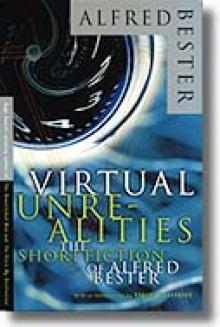 Galatea Galante
Galatea Galante Hobson’s Choice
Hobson’s Choice Redemolished
Redemolished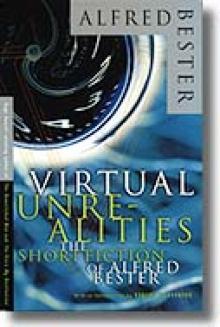 The Flowered Thundermug
The Flowered Thundermug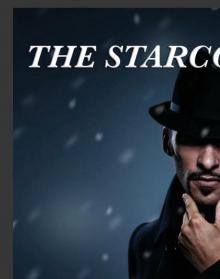 The Starcomber
The Starcomber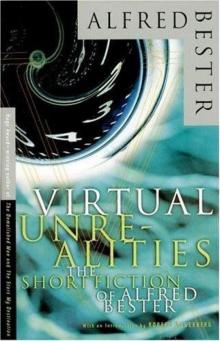 Virtual Unrealities: The Short Fiction of Alfred Bester
Virtual Unrealities: The Short Fiction of Alfred Bester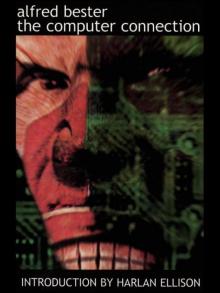 The Computer Connection
The Computer Connection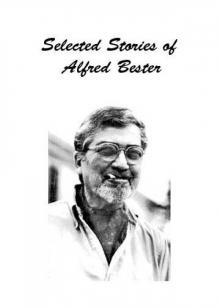 Selected Stories of Alfred Bester
Selected Stories of Alfred Bester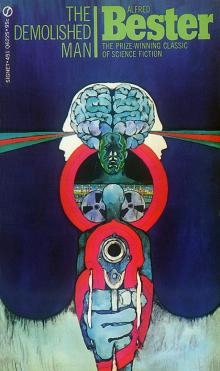 The Demolished Man
The Demolished Man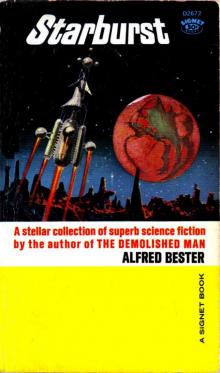 Starburst
Starburst Psychoshop
Psychoshop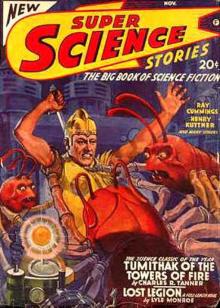 Biped Reegan
Biped Reegan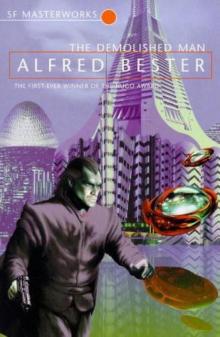 Demolished Man
Demolished Man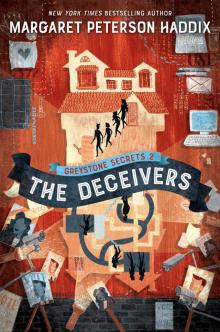 THE DECEIVERS
THE DECEIVERS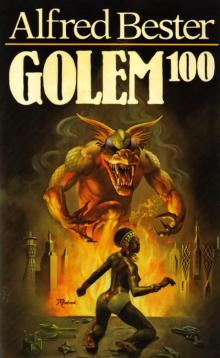 GOLEM 100
GOLEM 100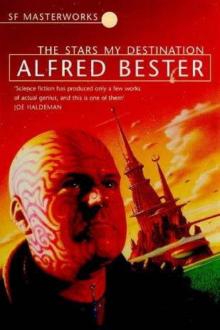 The Stars My Destination
The Stars My Destination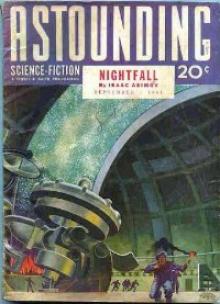 Adam And No Eve
Adam And No Eve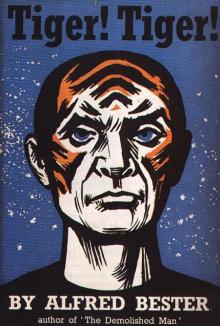 The Stars My Destination ( Tiger! Tiger! )
The Stars My Destination ( Tiger! Tiger! )